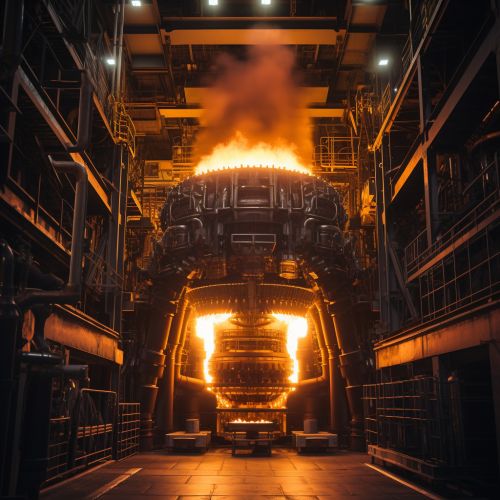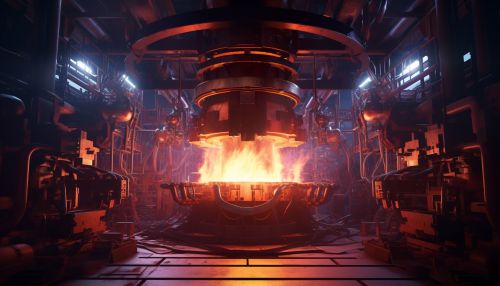Oxy-fuel combustion
Overview
Oxy-fuel combustion is a method of burning a fuel using pure oxygen instead of air as the primary oxidant. Since the nitrogen component of air is not heated, fuel efficiency is increased and greenhouse gas emissions are reduced. This combustion process is primarily used in industrial settings, such as power plants and industrial furnaces.
Process
The oxy-fuel combustion process begins with the separation of oxygen from air. This is typically accomplished through a process known as cryogenic distillation, although other methods such as pressure swing adsorption can also be used. The pure oxygen is then mixed with a fuel source, which can be a wide variety of substances including coal, natural gas, or oil. This mixture is then ignited, producing a flame that can reach temperatures of up to 3500 degrees Celsius. The high temperature of the flame allows for the efficient combustion of the fuel, reducing the amount of waste products produced.


Advantages
One of the primary advantages of oxy-fuel combustion is its high fuel efficiency. Because the process uses pure oxygen instead of air, the nitrogen component of air is not heated. This reduces the amount of energy wasted in heating unnecessary components of the air, increasing the overall efficiency of the process. Additionally, the high temperature of the flame produced in oxy-fuel combustion allows for the efficient combustion of the fuel, reducing the amount of waste products produced.
Another advantage of oxy-fuel combustion is its potential for carbon capture. Because the combustion process produces a high concentration of carbon dioxide, it is possible to capture this gas for storage or use in other processes. This can significantly reduce the greenhouse gas emissions from the combustion process, making it a more environmentally friendly option than traditional combustion methods.
Disadvantages
Despite its advantages, oxy-fuel combustion also has several disadvantages. The process requires a source of pure oxygen, which can be expensive and energy-intensive to produce. Additionally, the high temperatures produced in the combustion process can lead to increased wear and tear on equipment, potentially increasing maintenance costs.
Furthermore, while the potential for carbon capture is a significant advantage of oxy-fuel combustion, the process of capturing and storing carbon dioxide is not without its challenges. These include the need for large storage facilities, the risk of leaks, and the potential environmental impacts of storage.
Applications
Oxy-fuel combustion is used in a variety of industrial settings. In power plants, it is used to generate electricity. The high temperatures produced in the combustion process allow for the efficient generation of steam, which can then be used to drive a turbine and generate electricity.
In industrial furnaces, oxy-fuel combustion is used to produce high temperatures for processes such as glass making, steel production, and cement production. The high temperatures allow for the efficient melting of materials, while the use of pure oxygen reduces the amount of waste gases produced.
Future Developments
Research is currently being conducted into ways to improve the efficiency and environmental impact of oxy-fuel combustion. This includes the development of new methods for oxygen production, such as ionic membranes, which could potentially reduce the energy required for oxygen separation.
Additionally, research is being conducted into new methods for carbon capture and storage. This includes the development of new materials for carbon capture, as well as research into potential uses for captured carbon dioxide, such as in the production of synthetic fuels or in enhanced oil recovery.
